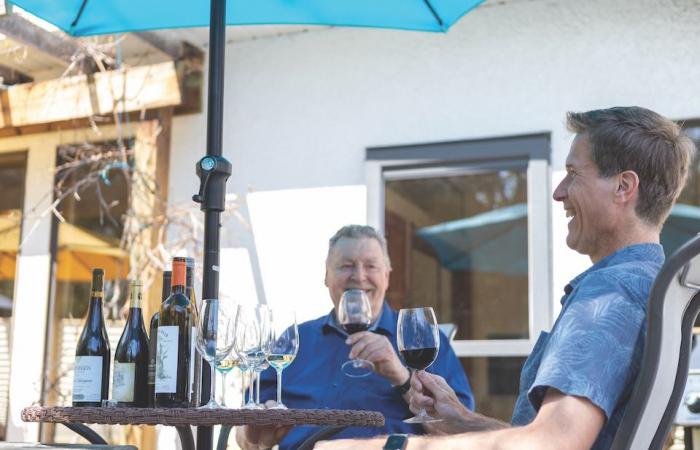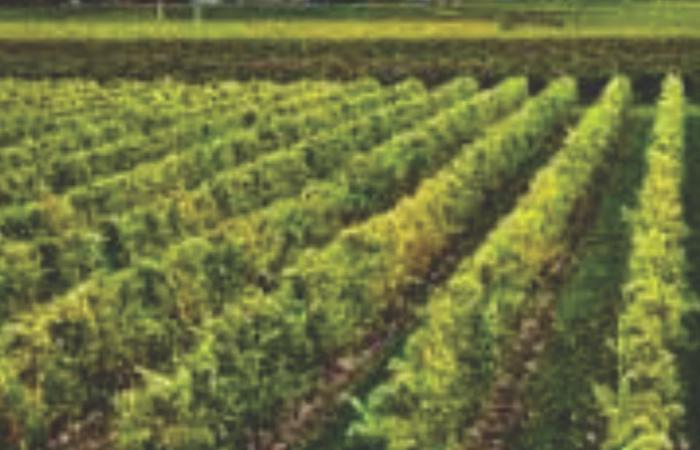The Niagara Peninsula lies where the western end of Lake Ontario overlaps the eastern end of Lake Erie. (Whether this is in fact a peninsula, or an isthmus, or not, we can let the geographers argue among themselves.) Its most remarkable feature is the Niagara Escarpment, a UNESCO World Heritage reserve that splits the peninsula in two. The top of the escarpment – above Niagara Falls – is a high plateau stretching west along the north shore of Lake Erie toward Lake Huron. Below the escarpment is a narrow plain sloping to the south shore of Lake Ontario. This is the magical terroir where wine grapes are grown.
Until recently, Canada was not known as a source of fine wine – quite the opposite, in fact. But the challenge of free trade with our American neighbours, coupled with audacious innovation by intrepid pioneers, have now made Ontario an acknowledged source of internationally competitive, award-winning vinifera wines.
Niagara lies at the same latitude as Montalcino, Italy. With a terroir of shallow gravelly soil overlying limestone, its microclimate gentled by the two lakes, conditions are ideal for grapevines.
As viticulture has expanded in this very limited region between Hamilton and Niagara, several site-specific VQA appellations have been designated. VQA is Canada’s system for identifying a wine’s provenance. A wine labelled VQA Ontario must be made with 100% vinifera grapes grown in Ontario.
The Niagara region includes the Niagara Peninsula, the Niagara Escarpment to the west of the city of St. Catharines, and Niagara-on-the-Lake to the east. Any wine with a local VQA must be from grapes grown entirely within its designated VQA area. Now these prime areas are further subdivided into their most prestigious sites: Lincoln Lakeshore, Vinemount Ridge, Creek Shores, Four Mile Creek, Niagara Lakeshore, Niagara River, Beamsville Bench, St. David’s Bench, Short Hills Bench, Twenty Mile Bench. Note the recurring use of the term Bench: this refers to the stepped slopes at the base of the escarpment, where the finest grapes are grown. In every case, to use one of these precise appellations, all of the grapes must originate within that small, clearly defined patch of ground; it is worth your while seeking out those site names on the label. As with European wines, the more precise the delineation of source, the finer the wine’s pedigree. It took the Europeans centuries to work out which grapes thrive best in which region; Ontario vintners are trying to compress that knowledge within
a much shorter time span, learning as they go.
During this time of experimentation, many grape varieties are grown; I have found happiness with Chardonnay and Pinot Noir. Riesling is also touted, often in an intermediate style between German and Alsatian that I find troubling. Vintners are having more success with spicy Cabernet Franc than with the more internationally popular Cabernet Sauvignon, and, just as in Bordeaux, it is often blended with other grape varieties for balance. In addition to the specific VQA, many wineries now offer prime single-vineyard selections. Look for ‘Le Grand Clos’ from Clos Jordanne, ‘CSV’ from Cave Spring, ‘Butler’s Grant’ from Wescott, ‘Ghost Creek’ from Trius, ‘Robyn’s Block’ from Tawse, among others. These single vineyard bottlings represent Ontario’s prestige products.
There are now well over 100 estate wineries here worthy of your consideration, including Marynissen, Henry of Pelham, Creekside, Queylus, Hidden Bench, Stoney Ridge, Thirty Bench, Inniskillen, Chateau des Charmes, Peninsula Ridge, and many more. This is a dynamic region, with a focus on estate bottling, and continuous experimentation. Your own wine journey can be part of that dynamic – seek, explore, and enjoy the wines of home!
© Paul Inksetter 2023





